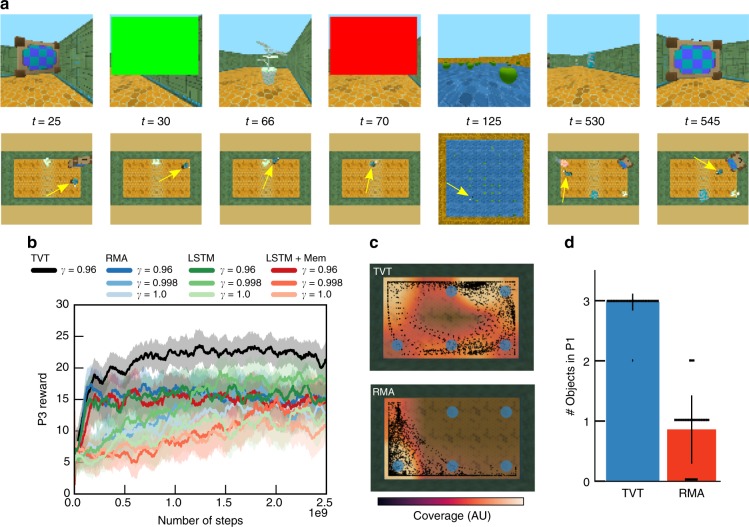Fig. 6.
More complex information acquisition. a In Latent Information Acquisition, the agent (yellow arrow) must touch three procedurally generated objects to identify from a subsequent color flash if each is either green or red. In P3, green objects yield positive reward and red objects negative. b TVT performed well on this task (black curve; Supplementary Movie 4). The non-TVT agents touched all objects in P3 without regard to their value, thus achieving on average 15 points, whereas TVT discriminated between the good and bad objects. Error bars represent standard errors across five agent training runs. c In 20 trials, we plot the positional coverage in P1 of a TVT agent compared to RMA. TVT developed exploratory behavior in P1: it navigated among the six possible locations where the P1 objects could be placed, whereas the RMA typically moved into the corner. d A quantification over 50 trials of the exploratory behavior in P1: TVT usually touched all three of the objects in P1, whereas RMA touched about one. Each dot represents the value in one trial. The error bars indicate one standard deviation

